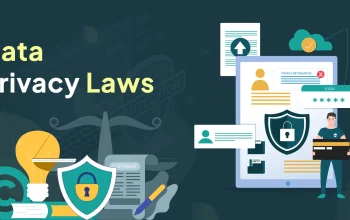Cybersecurity and Intellectual Property Law: Key Legal Issues for U.S. Businesses in 2025
Cybersecurity and Intellectual Property Law: Key Legal Issues for U.S. Businesses in 2025
As technology advances and the digital landscape evolves, businesses in the United States are facing increasing challenges related to cybersecurity and intellectual property (IP) law. The year 2025 promises to bring significant developments in both areas, impacting how companies protect their sensitive information and intellectual assets. This article explores the key legal issues that U.S. businesses need to address regarding cybersecurity and IP law in 2025, offering insights into emerging trends, regulatory changes, and best practices for compliance.
1. Introduction to Cybersecurity and Intellectual Property Law
Cybersecurity and intellectual property law are critical areas of concern for businesses as they navigate the complexities of the digital age. Cybersecurity focuses on protecting digital assets and data from unauthorized access, while intellectual property law governs the protection of creations of the mind, including patents, trademarks, copyrights, and trade secrets. Both areas intersect significantly, as robust cybersecurity measures are essential for safeguarding IP assets and preventing data breaches that could compromise proprietary information.
2. Key Cybersecurity Legal Issues for U.S. Businesses in 2025
a. Evolving Cybersecurity Regulations
The regulatory landscape for cybersecurity is expected to become more stringent and comprehensive:
- Federal Cybersecurity Standards: Federal regulations are likely to introduce more rigorous cybersecurity standards for businesses. This may include new requirements for data protection, incident response, and breach notification. Businesses will need to stay abreast of these standards to ensure compliance and avoid potential penalties.
- State-Level Regulations: States are continuing to develop and enforce their own cybersecurity laws. For instance, California’s Consumer Privacy Act (CCPA) and New York’s SHIELD Act have set high standards for data protection. Companies operating in multiple states must navigate a complex web of regulations, making it crucial to implement comprehensive cybersecurity policies that meet both federal and state requirements.
b. Data Breach Notification Requirements
Data breach notification laws are becoming more stringent:
- Timely Notification: Regulations may mandate more specific timelines for notifying affected individuals and regulatory authorities in the event of a data breach. This requires businesses to have efficient systems in place for detecting and responding to breaches promptly.
- Detailed Reporting: Companies may be required to provide detailed information about the nature of the breach, the types of data affected, and the steps taken to mitigate the impact. Accurate and transparent reporting is essential for regulatory compliance and maintaining customer trust.
c. Cybersecurity and Third-Party Risk Management
Managing cybersecurity risks associated with third-party vendors is becoming increasingly important:
- Vendor Assessments: Businesses will need to conduct thorough assessments of third-party vendors to ensure they meet cybersecurity standards. This includes evaluating their security practices, data protection measures, and breach response protocols.
- Contractual Obligations: Contracts with third-party vendors should include specific cybersecurity requirements and breach notification clauses. Clearly defined obligations help mitigate risks and ensure that vendors take appropriate measures to protect sensitive information.
d. Emerging Cyber Threats and Technologies
Businesses must stay vigilant against emerging cyber threats and technologies:
- Ransomware Attacks: Ransomware attacks are becoming more prevalent and sophisticated. Companies need to implement robust defenses, including regular data backups, employee training, and incident response plans to address this threat effectively.
- Artificial Intelligence and Machine Learning: The use of AI and machine learning in cybersecurity is increasing. While these technologies offer advanced threat detection and response capabilities, they also introduce new challenges, such as potential biases and ethical concerns. Businesses must navigate these challenges while leveraging AI for enhanced security.
3. Key Intellectual Property Law Issues for U.S. Businesses in 2025
a. Evolving IP Protection Strategies
The strategies for protecting intellectual property are expected to evolve:
- Digital IP Protection: As digital content becomes more prevalent, businesses will need to adopt advanced methods for protecting digital IP assets. This includes implementing digital rights management (DRM) technologies, watermarking, and robust encryption to prevent unauthorized use and distribution.
- Global IP Enforcement: With the global nature of business, enforcing IP rights across borders will become more complex. Companies must understand and navigate international IP laws and treaties, such as the Agreement on Trade-Related Aspects of Intellectual Property Rights (TRIPS), to protect their assets globally.
b. IP and Cybersecurity Intersection
The intersection of IP and cybersecurity presents unique challenges:
- Protecting Trade Secrets: Cybersecurity measures are crucial for safeguarding trade secrets from theft and unauthorized access. Businesses must implement strict access controls, encryption, and monitoring systems to protect confidential information.
- Addressing IP Theft: Cyberattacks targeting IP assets, such as patents and proprietary technologies, are on the rise. Companies need to develop strategies to detect and prevent IP theft, including monitoring for potential infringements and employing legal remedies to address violations.
c. Patent Law Developments
Patent law is expected to see significant developments:
- Patent Reform: Potential reforms to patent law may impact how patents are granted, enforced, and litigated. Businesses should stay informed about proposed changes and their implications for patent protection and litigation strategies.
- Emerging Technologies: The rise of emerging technologies, such as biotechnology, artificial intelligence, and blockchain, may lead to new challenges in patenting and protecting innovations. Companies must navigate evolving patent standards and ensure their technologies are adequately protected.
d. Trademark and Copyright Issues
Trademark and copyright issues will continue to be important:
- Trademark Protection: Businesses must actively manage and protect their trademarks to prevent infringement and dilution. This includes monitoring for unauthorized use, enforcing trademark rights, and adapting to changes in trademark law.
- Copyright Enforcement: With the increasing volume of digital content, enforcing copyright rights will remain a priority. Companies should employ strategies to detect and address copyright infringements, including leveraging technological solutions and pursuing legal action when necessary.
4. Best Practices for Compliance
a. Developing Robust Cybersecurity Policies
Implementing comprehensive cybersecurity policies is essential:
- Risk Assessments: Conduct regular risk assessments to identify vulnerabilities and potential threats. This helps in developing targeted security measures and response plans.
- Employee Training: Provide ongoing cybersecurity training for employees to raise awareness about potential threats and best practices for protecting sensitive information.
- Incident Response Plans: Develop and regularly update incident response plans to ensure preparedness for potential data breaches and cyberattacks.
b. Strengthening IP Protection Measures
To protect intellectual property, businesses should:
- Implement IP Management Systems: Utilize IP management systems to track and manage IP assets, monitor for potential infringements, and enforce IP rights effectively.
- File for IP Protection: Ensure timely and comprehensive filing for patents, trademarks, and copyrights to secure legal protection for intellectual assets.
- Monitor and Enforce IP Rights: Actively monitor the marketplace for potential IP infringements and take appropriate legal action to enforce IP rights and prevent unauthorized use.
c. Navigating Legal and Regulatory Changes
Staying informed about legal and regulatory changes is crucial:
- Subscribe to Legal Updates: Subscribe to legal and industry updates to stay informed about changes in cybersecurity and IP laws. This helps businesses adapt their practices to remain compliant.
- Consult Legal Experts: Engage with legal experts specializing in cybersecurity and intellectual property to receive tailored advice and guidance on navigating complex legal issues and ensuring compliance.
5. Preparing for the Future
a. Adapting to Emerging Technologies
Businesses must stay ahead of emerging technologies and their implications:
- Embrace Innovation: Leverage innovative technologies to enhance cybersecurity and IP protection, while remaining vigilant about potential risks and challenges.
- Update Policies and Practices: Regularly update cybersecurity and IP protection policies and practices to address new threats and regulatory changes.
b. Enhancing Collaboration
Collaboration is key to addressing cybersecurity and IP challenges:
- Collaborate with Industry Peers: Engage in industry forums and collaborations to share insights, best practices, and strategies for addressing common cybersecurity and IP issues.
- Work with Law Enforcement: Establish relationships with law enforcement agencies and cybersecurity organizations to support investigations and enforcement actions related to cybercrimes and IP theft.
6. Conclusion
As we approach 2025, U.S. businesses will face significant legal issues related to cybersecurity and intellectual property. Evolving regulations, emerging threats, and advancements in technology will shape the landscape, requiring businesses to adapt their strategies and practices accordingly.
By staying informed about legal developments, implementing robust cybersecurity measures, and protecting intellectual property assets, businesses can navigate these challenges effectively and ensure compliance. Embracing innovation, enhancing collaboration, and preparing for the future will be essential for safeguarding digital and intellectual assets in an increasingly complex and interconnected world.



